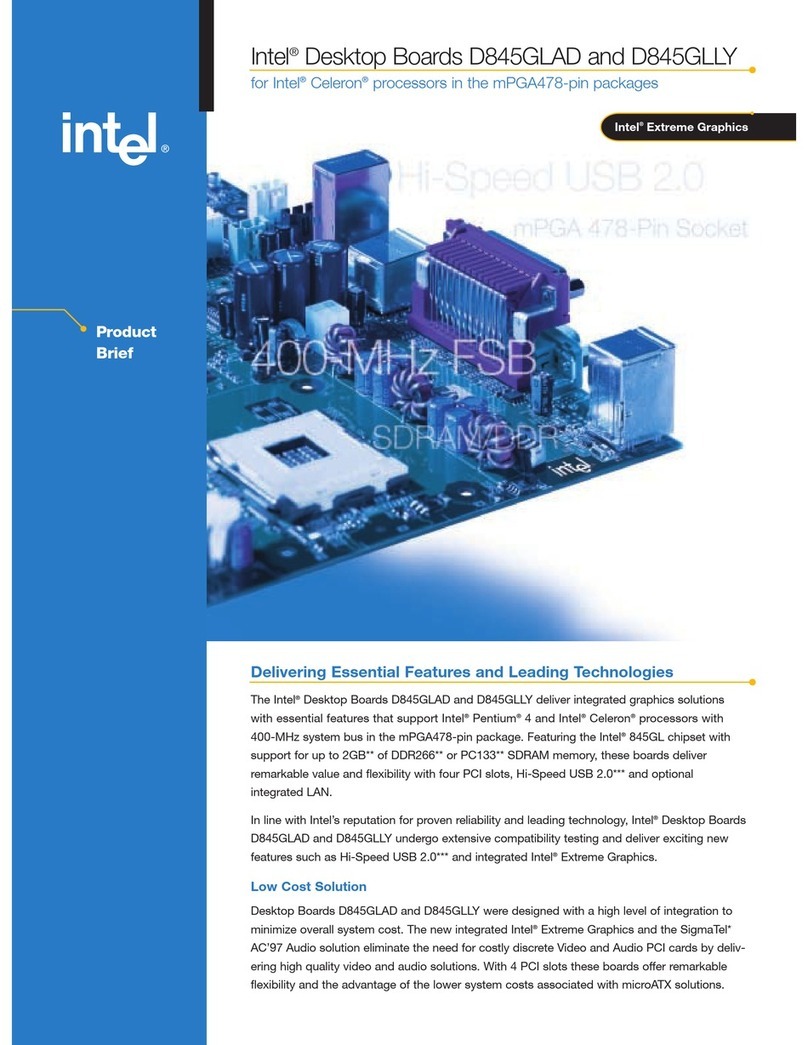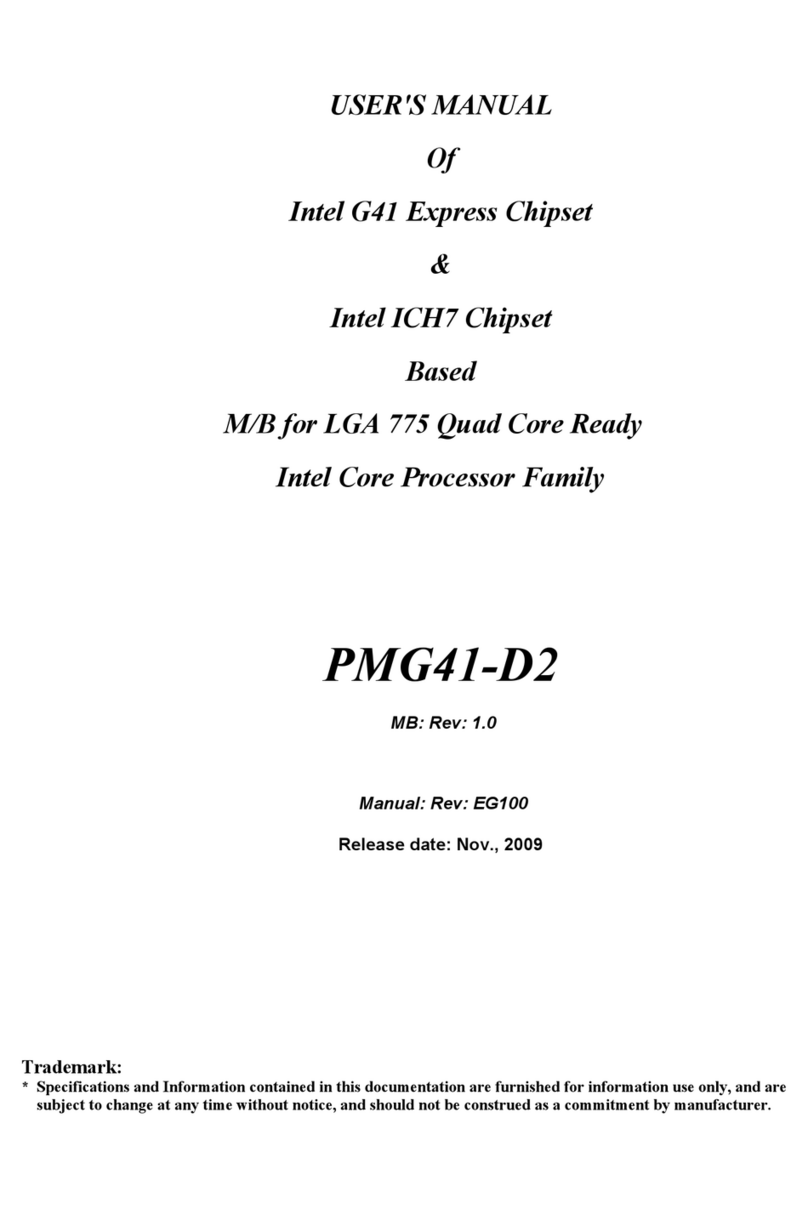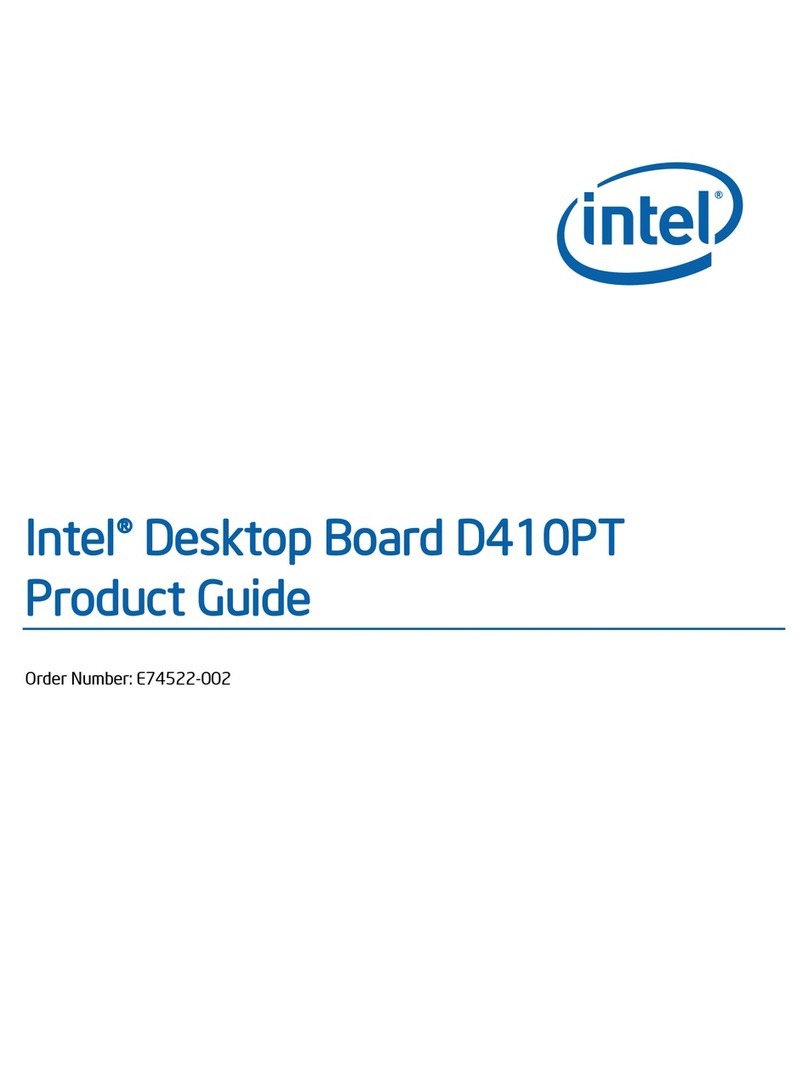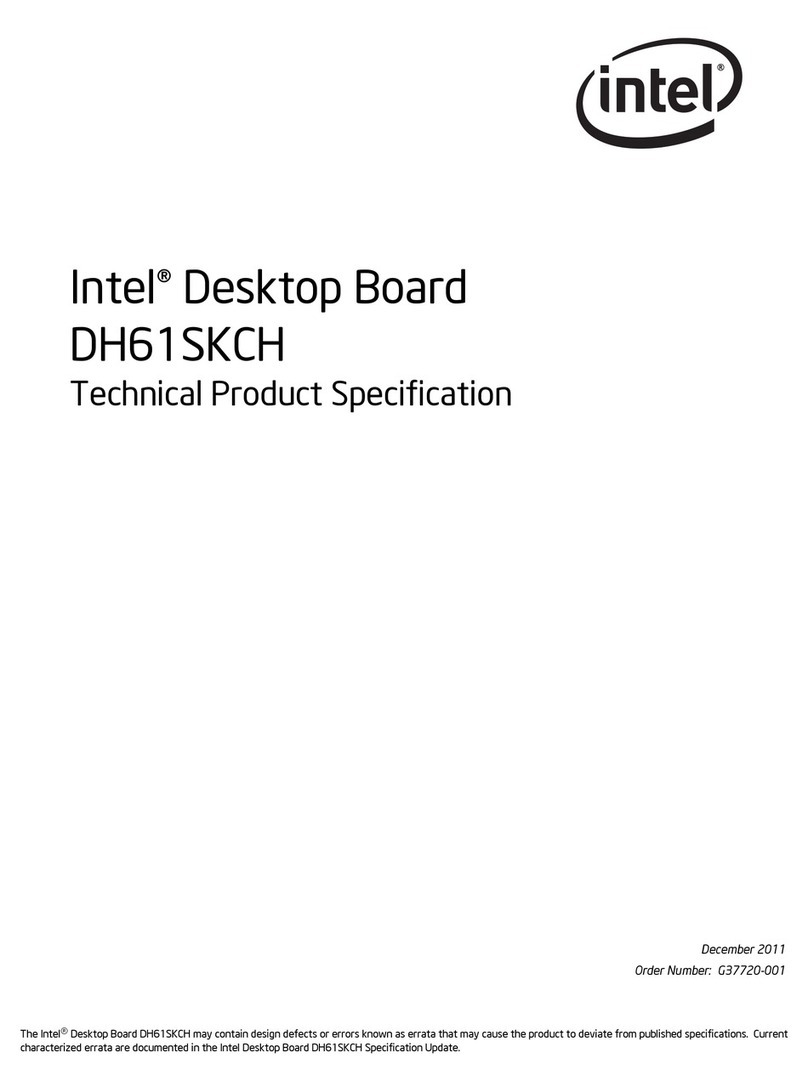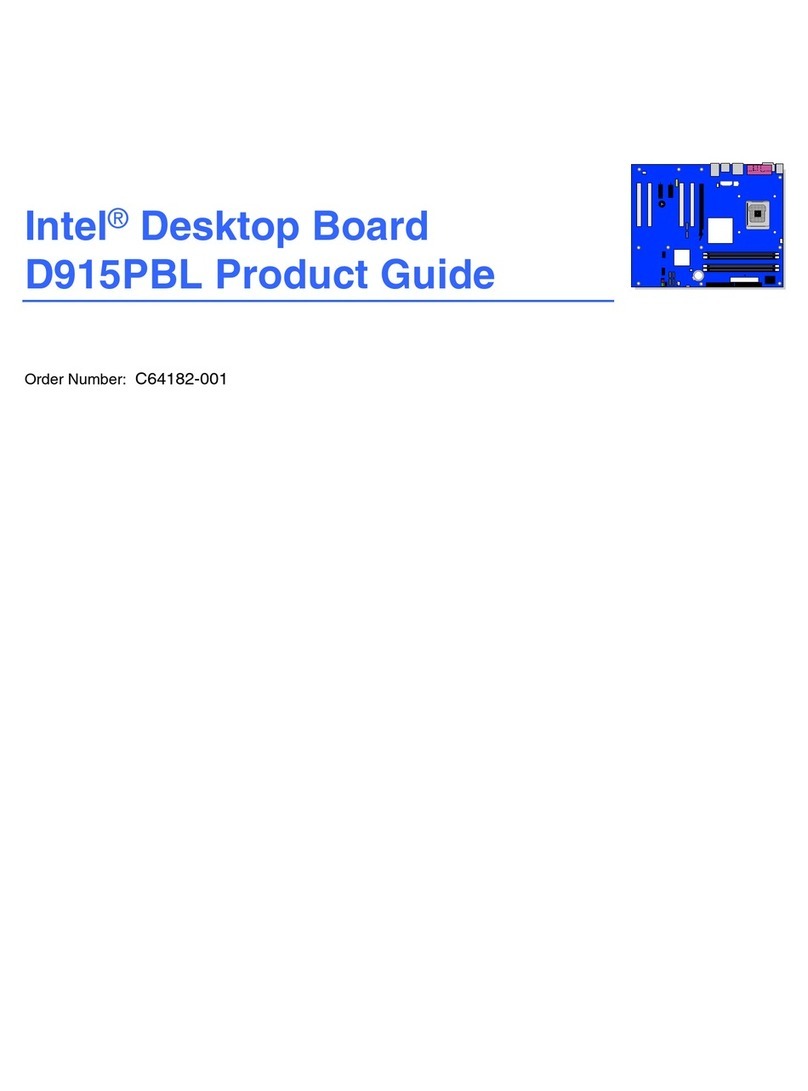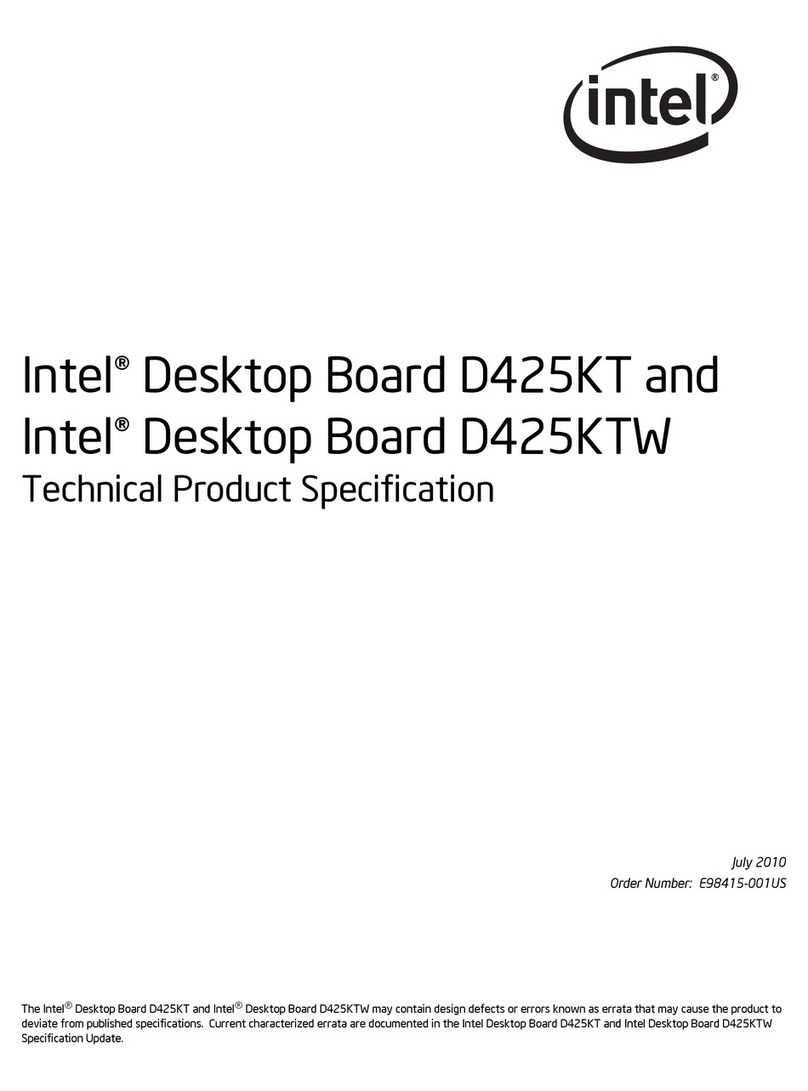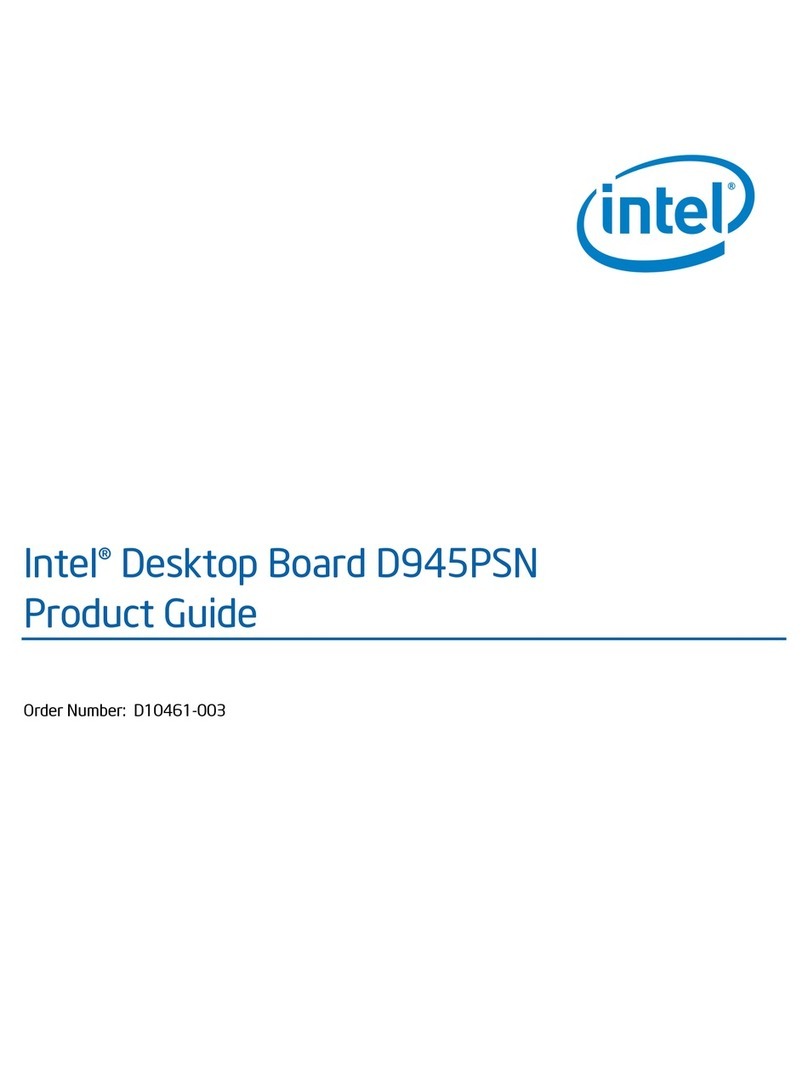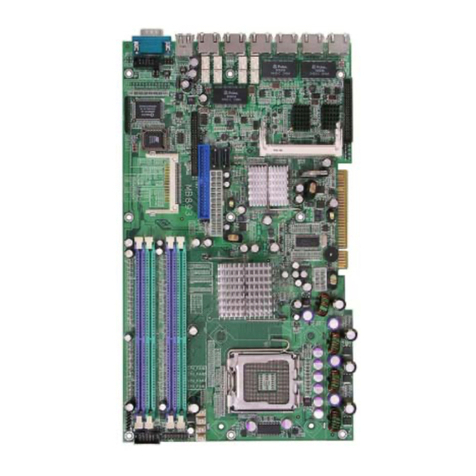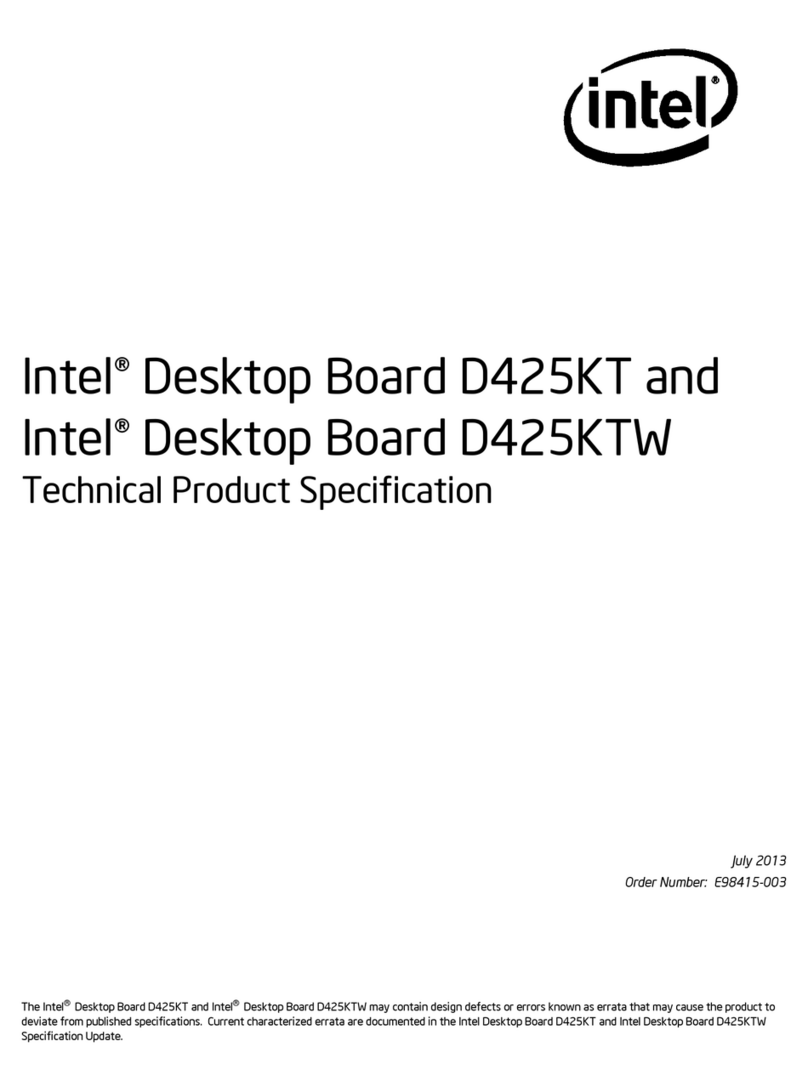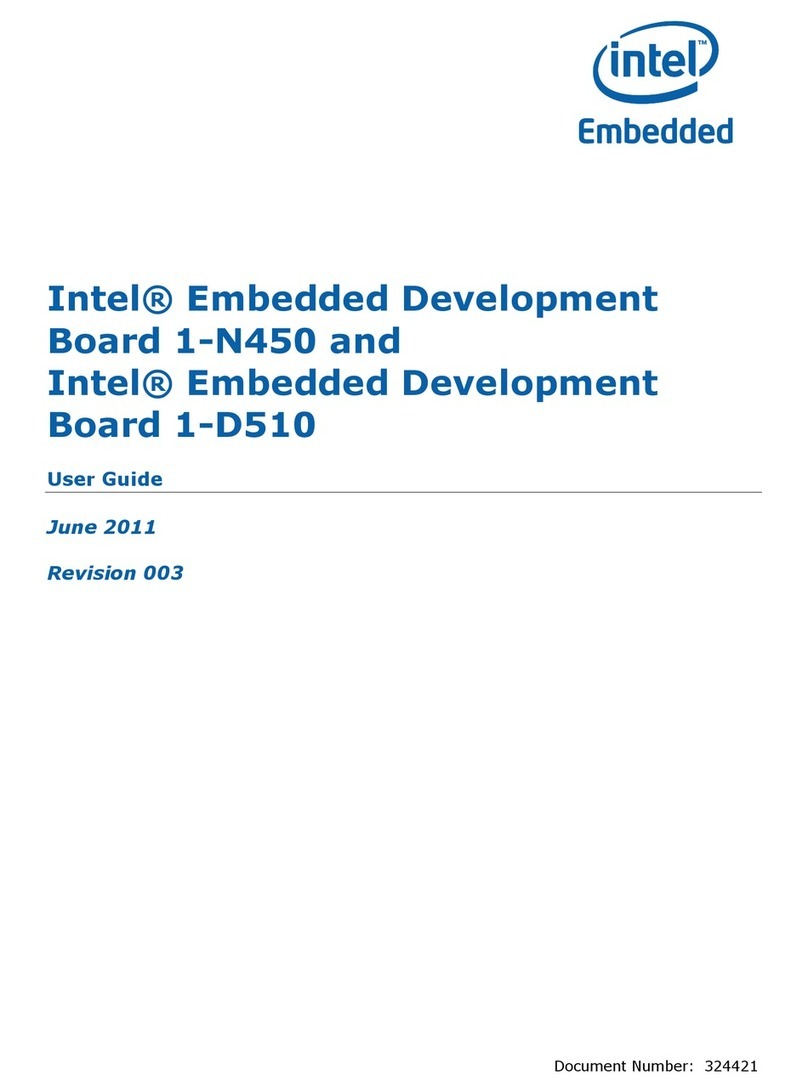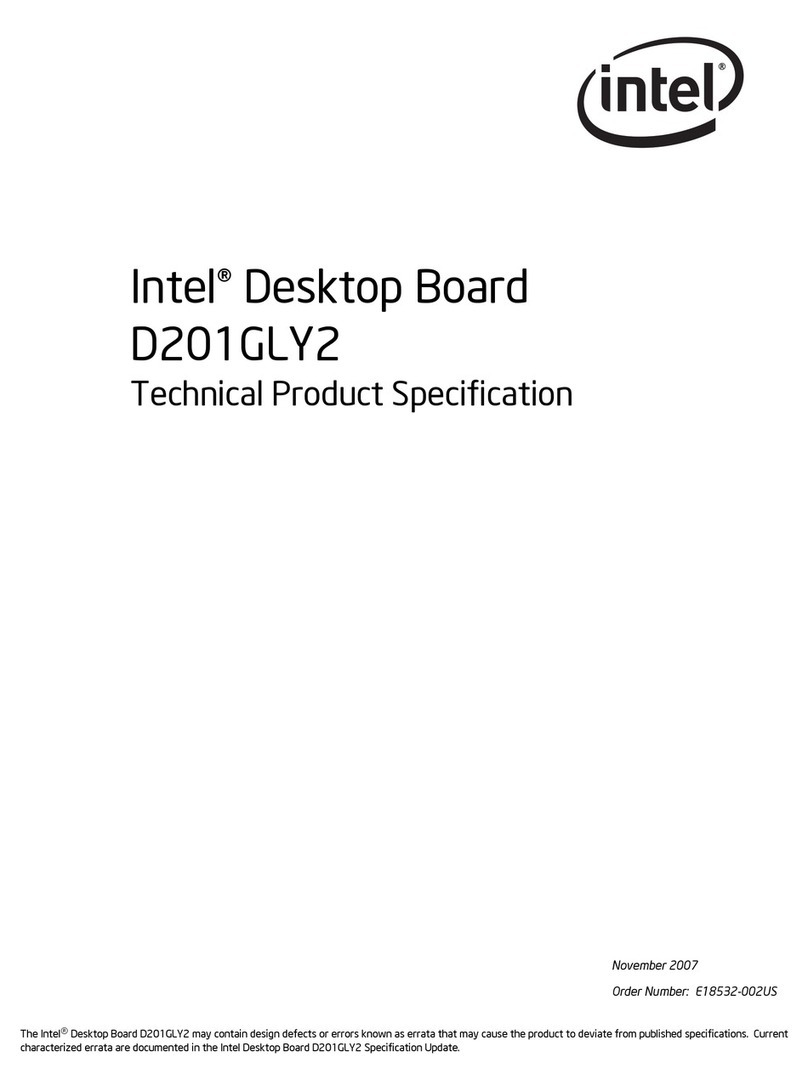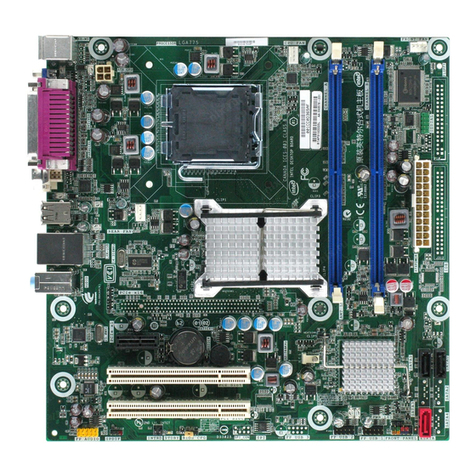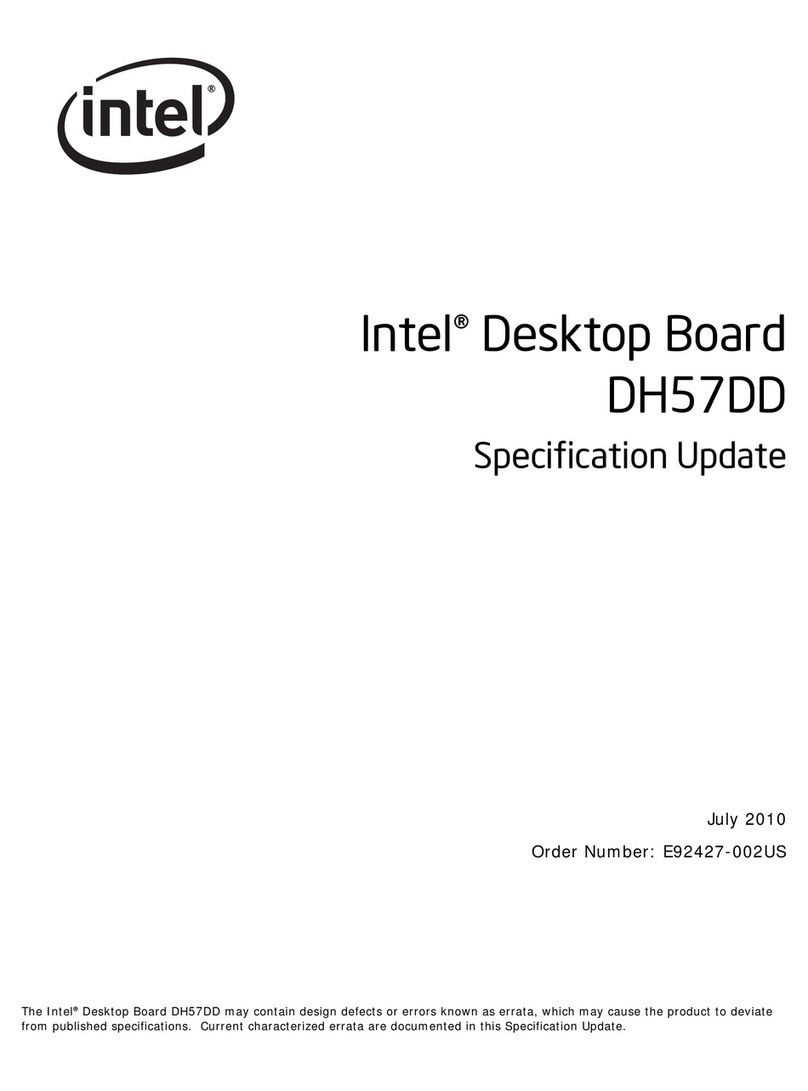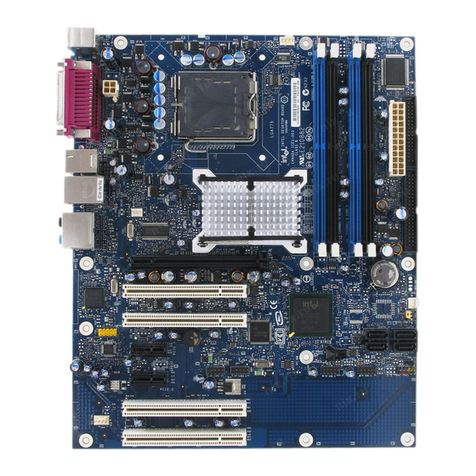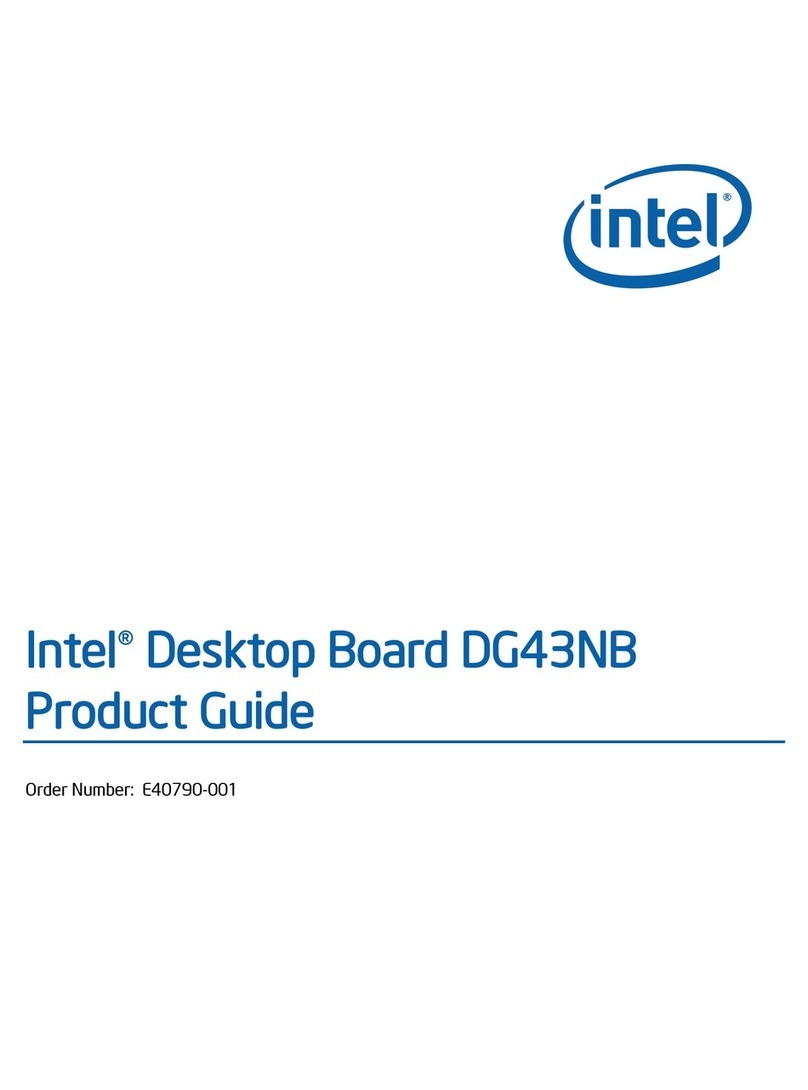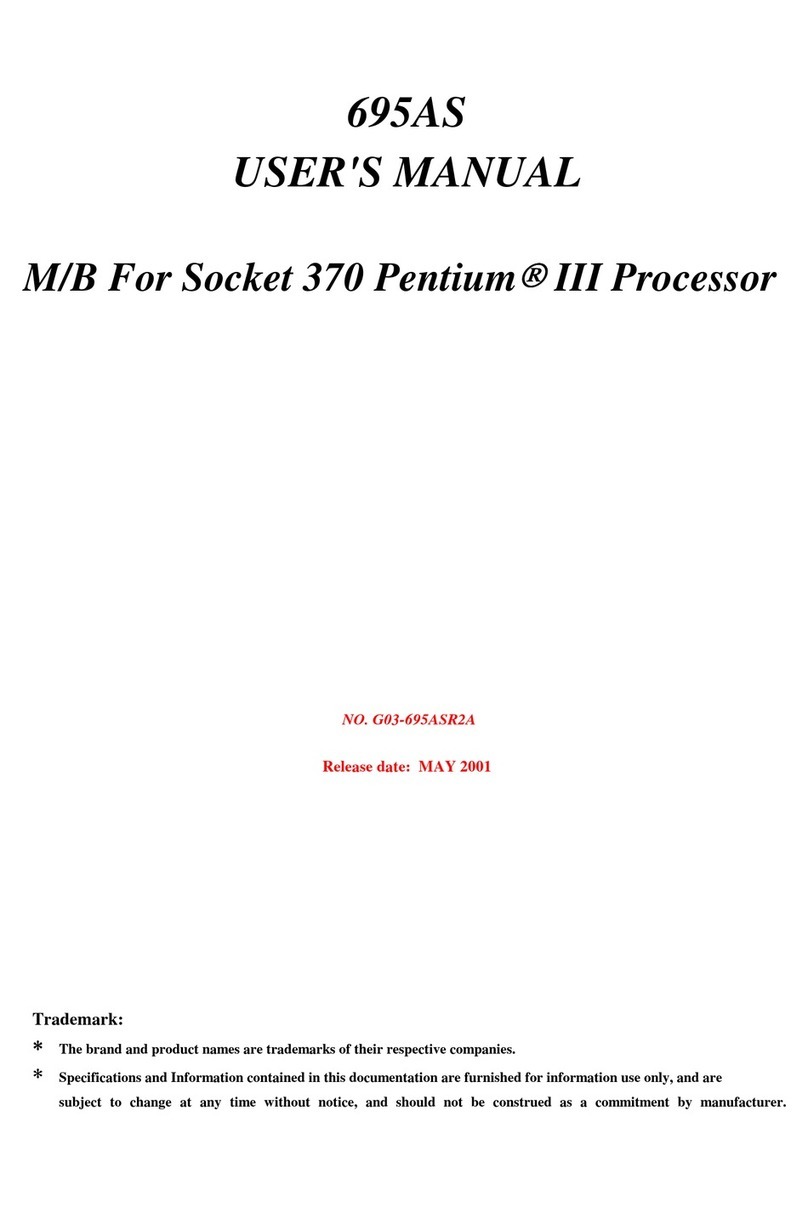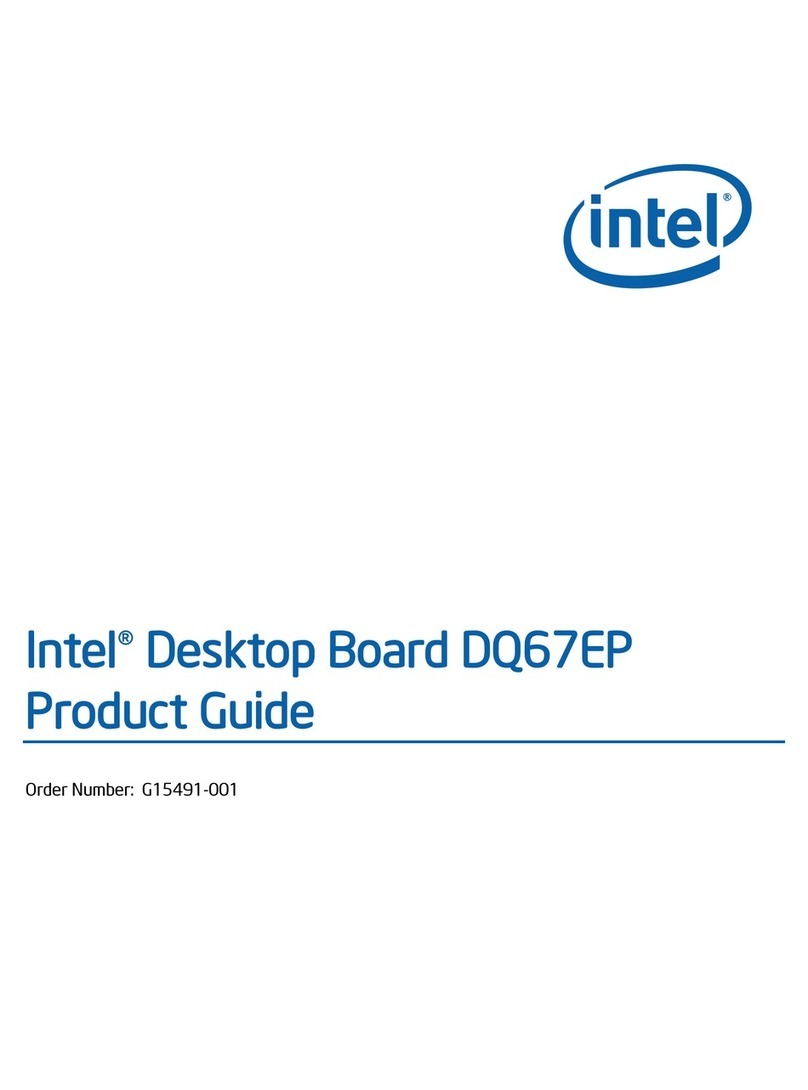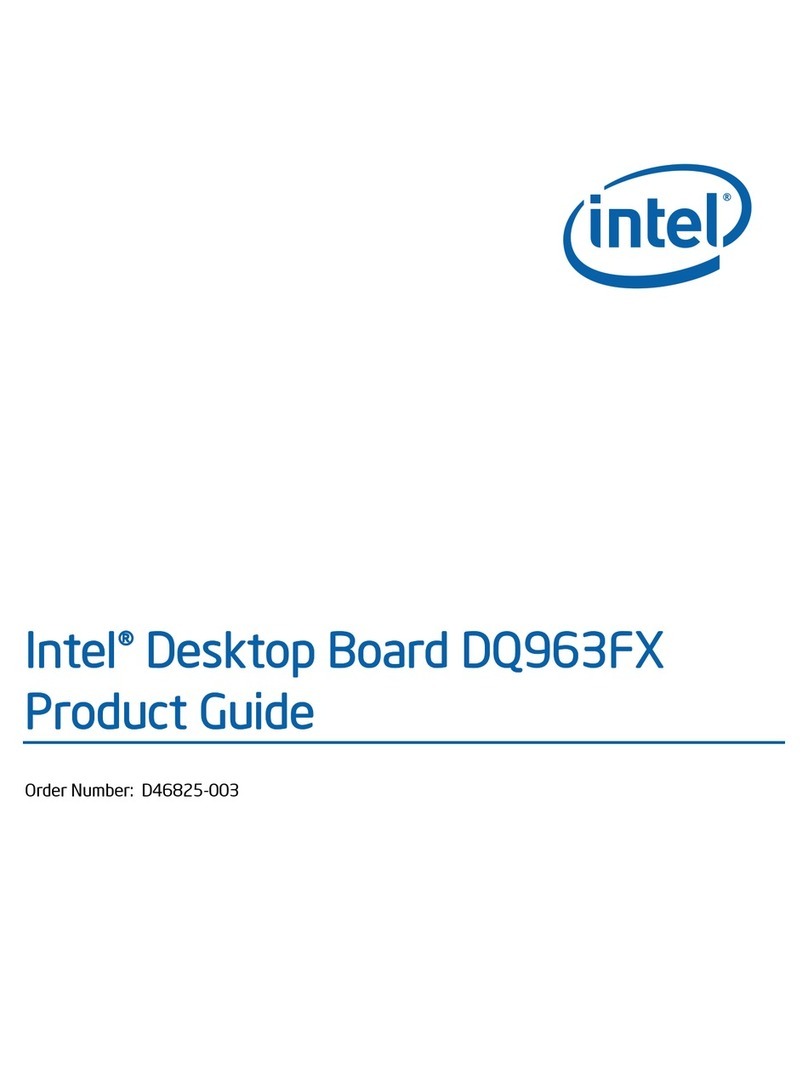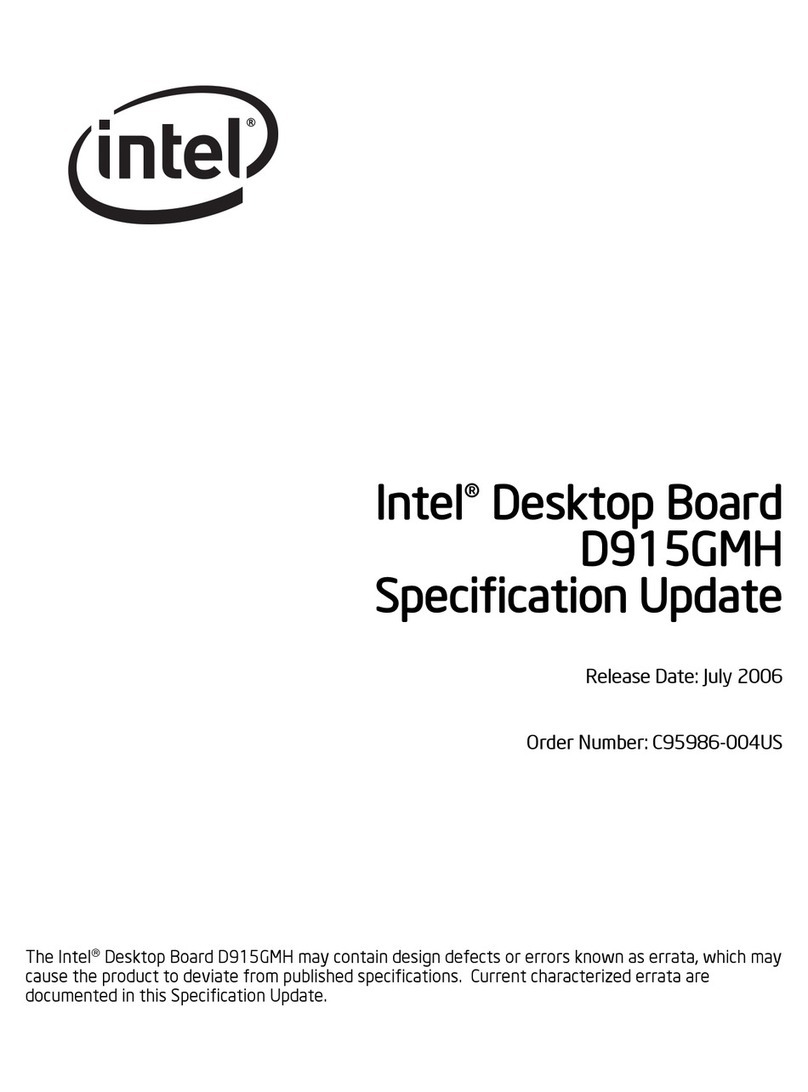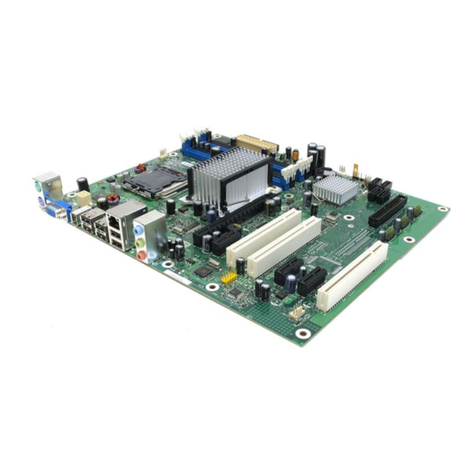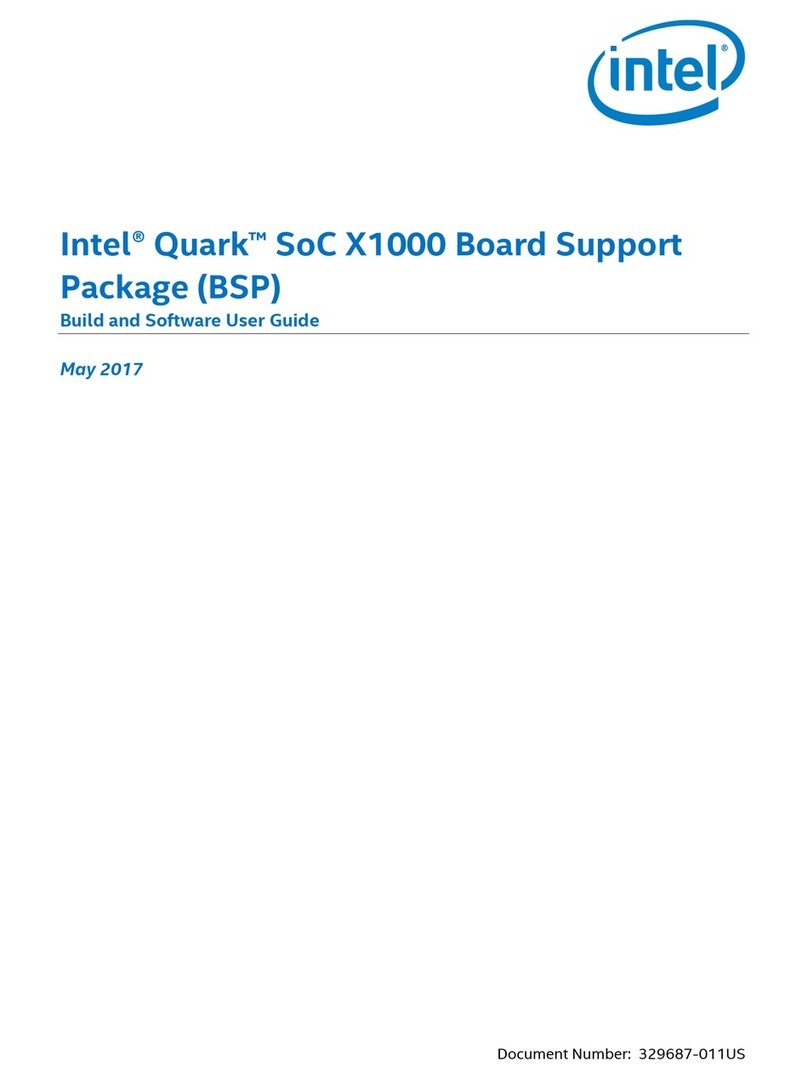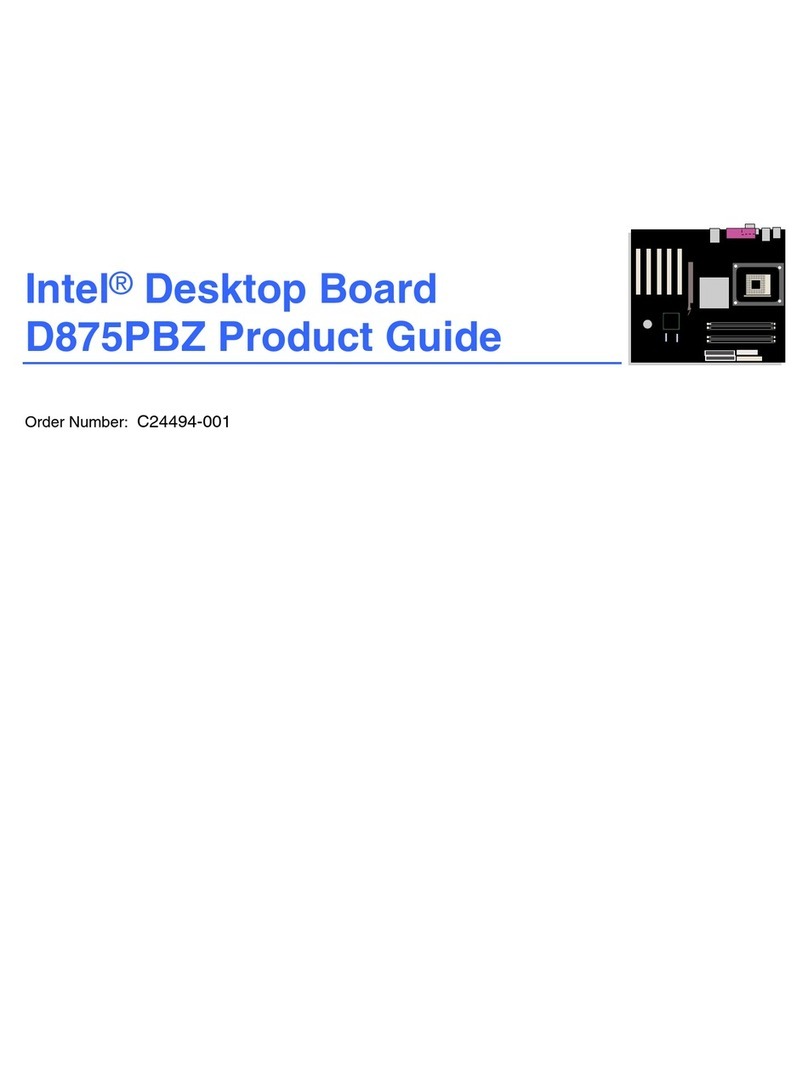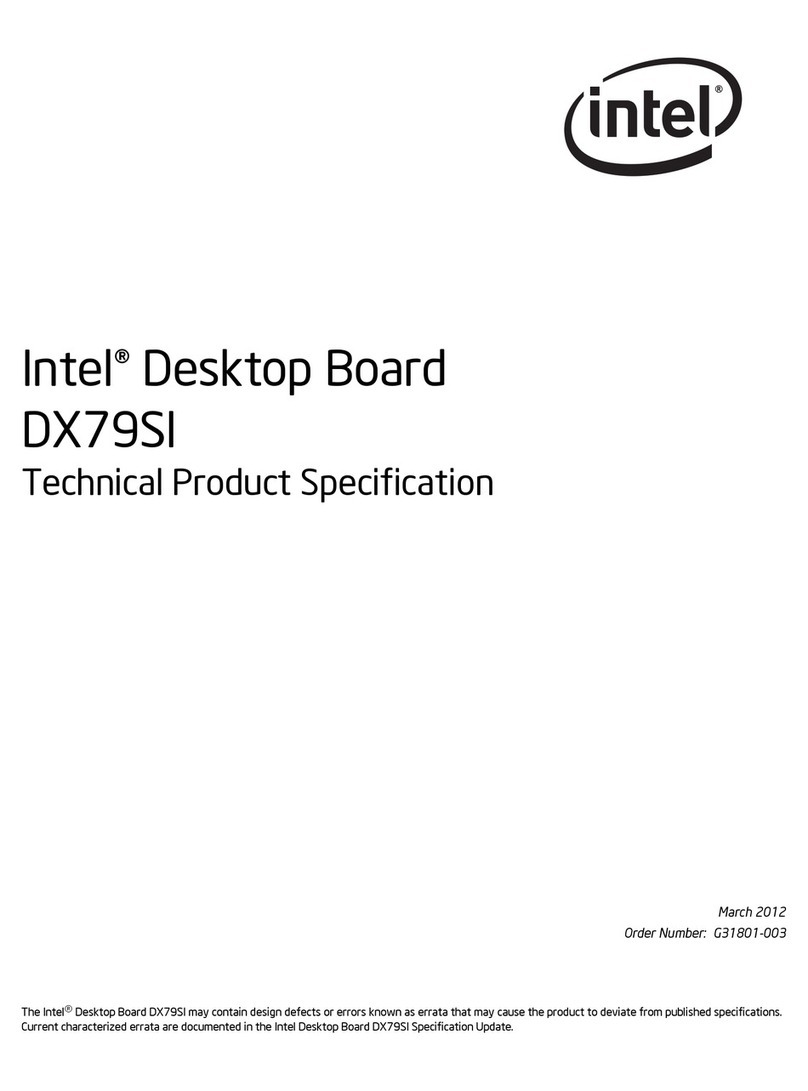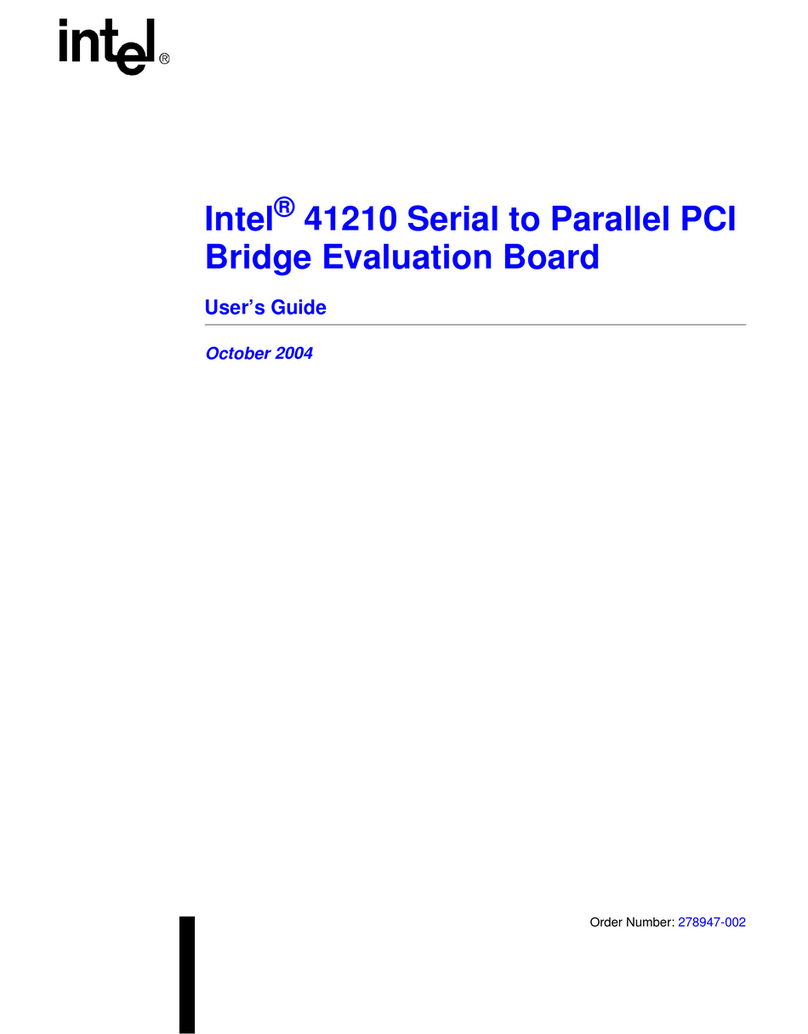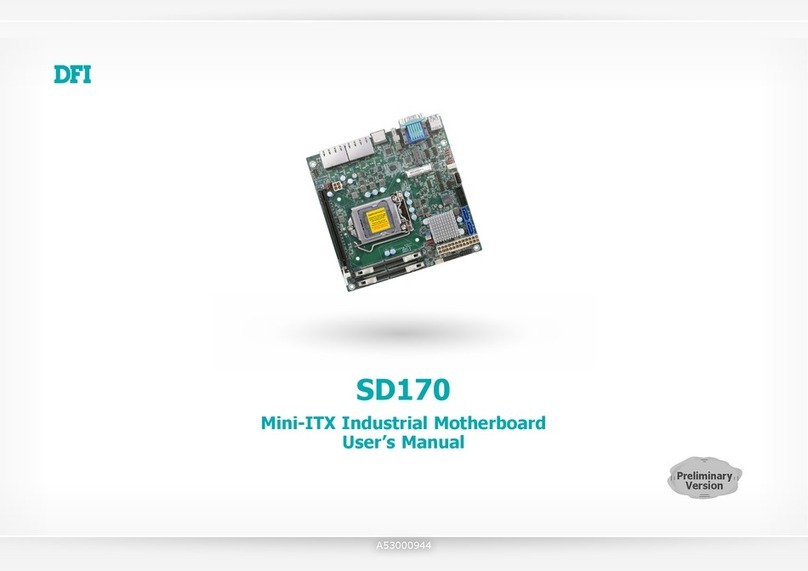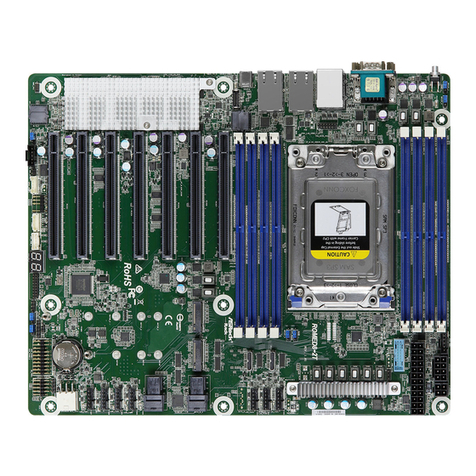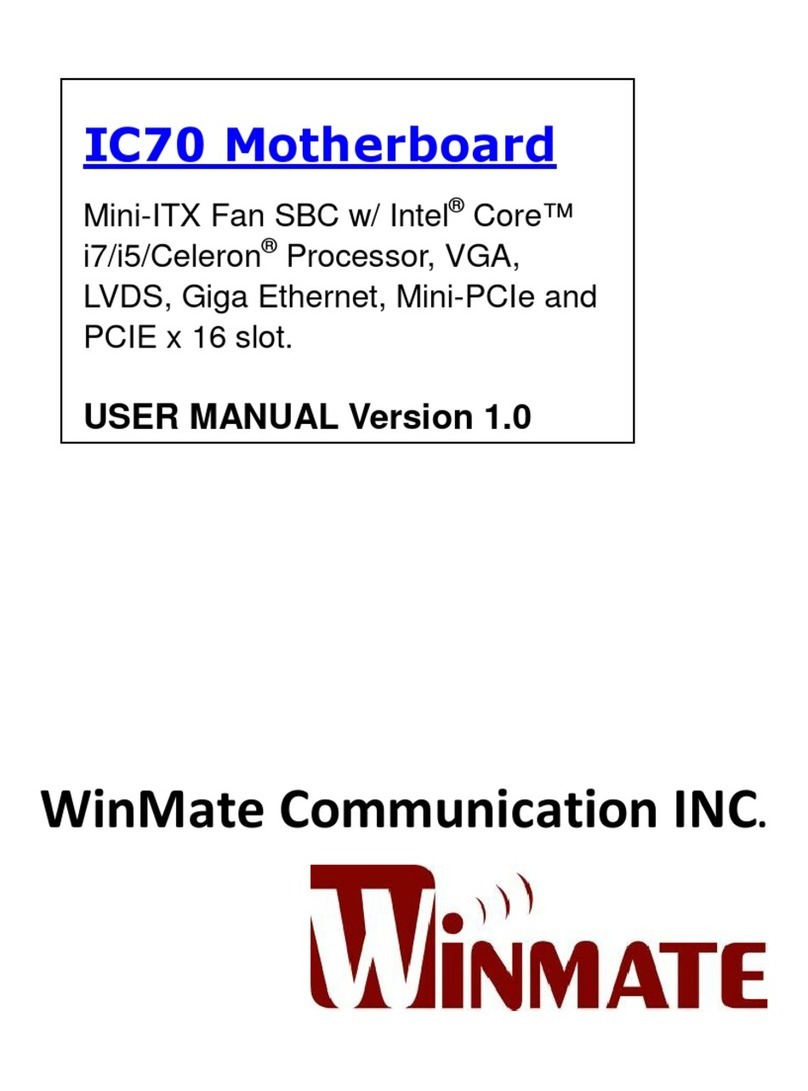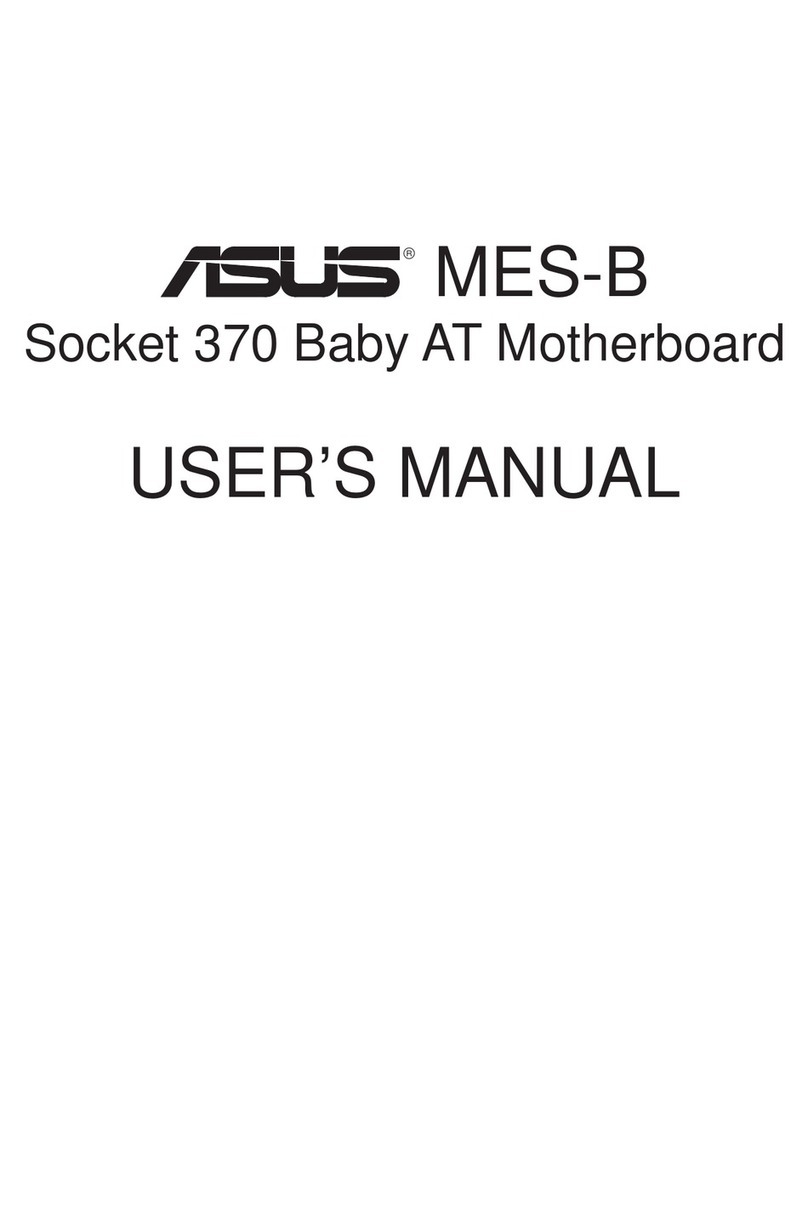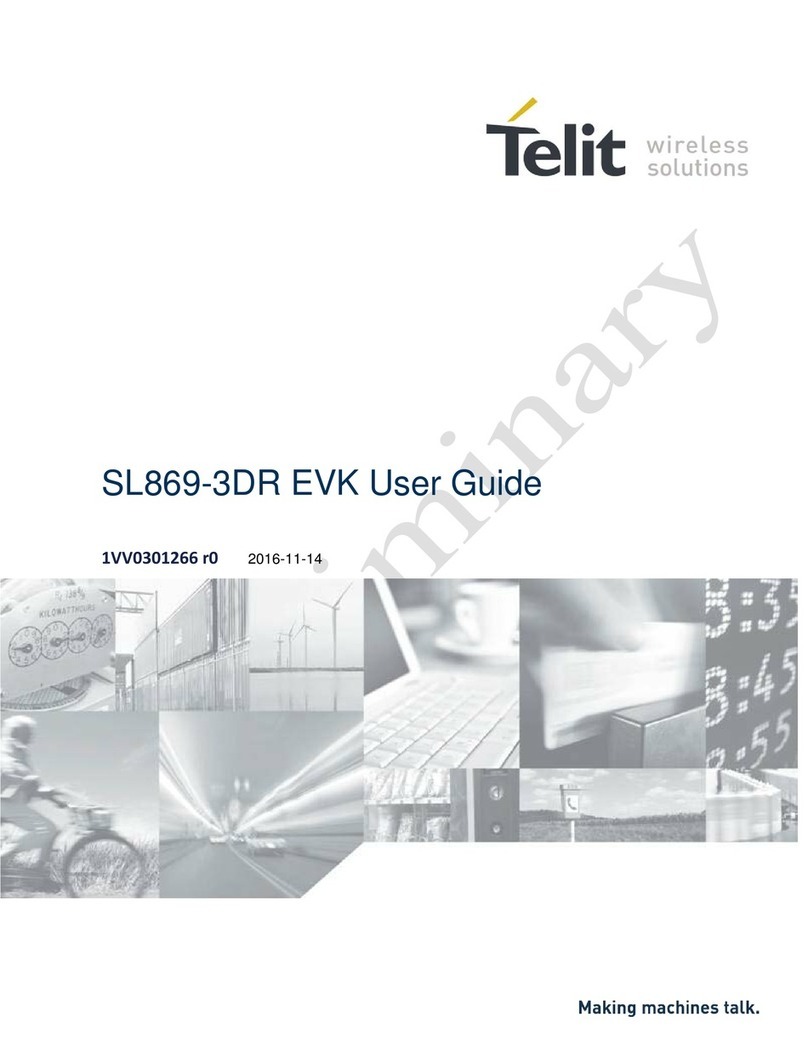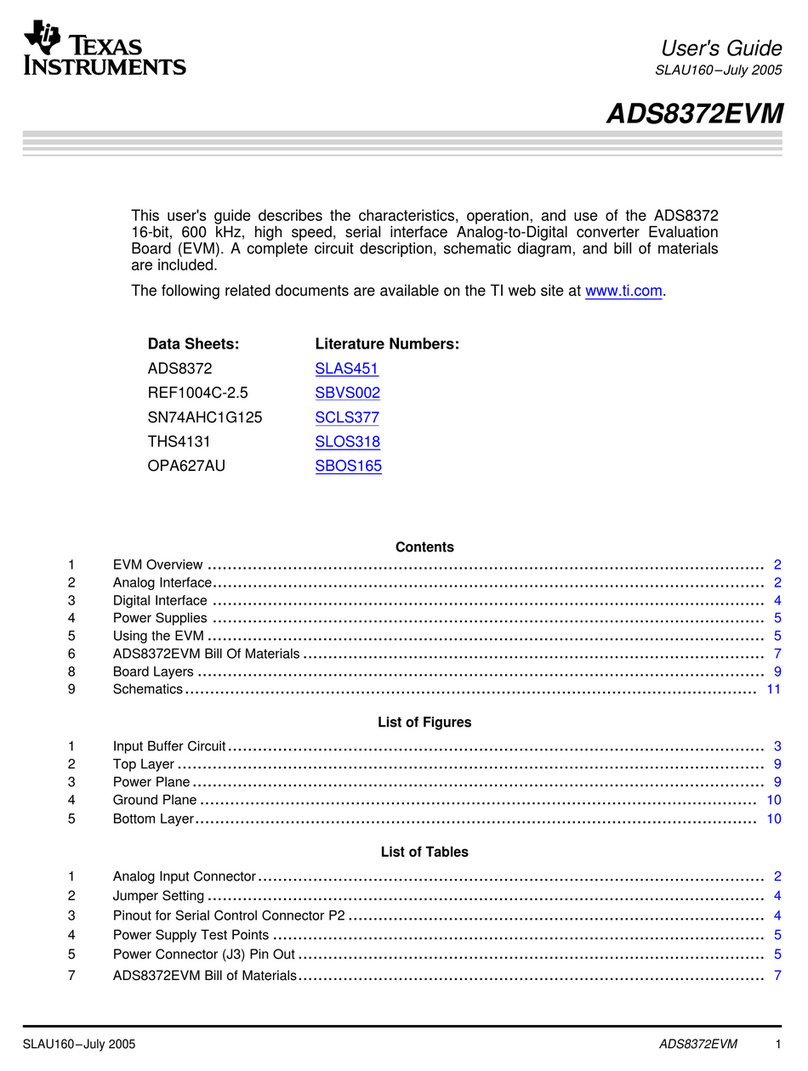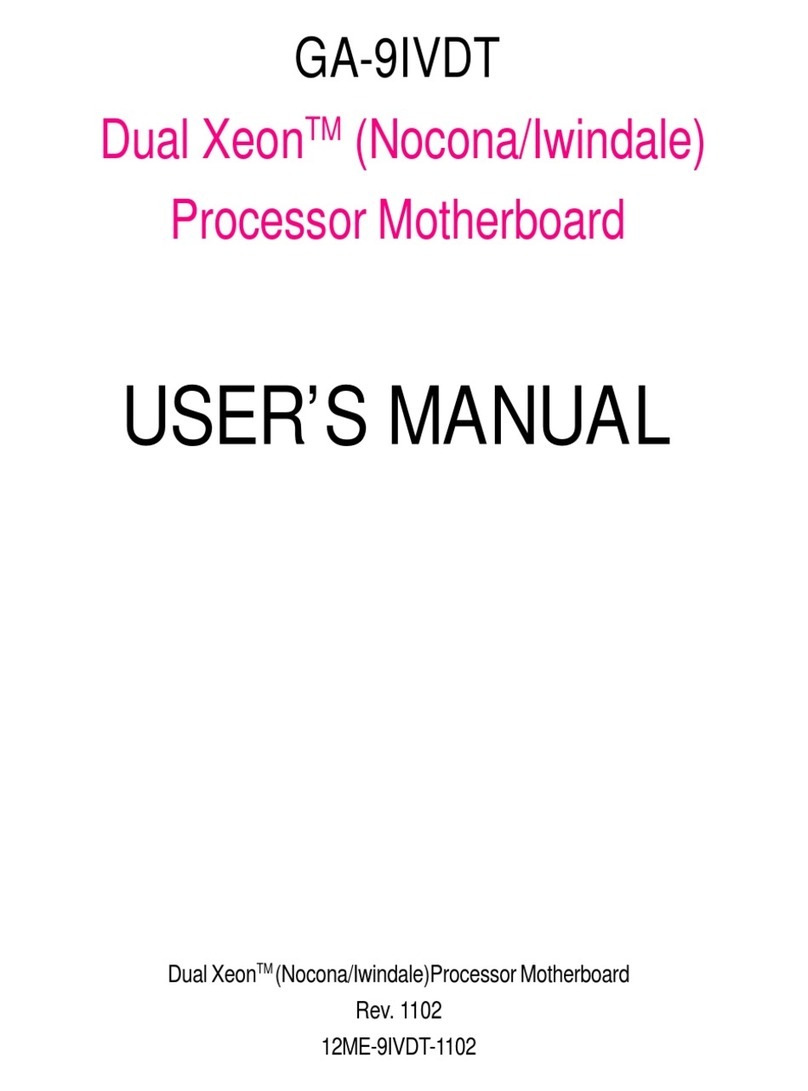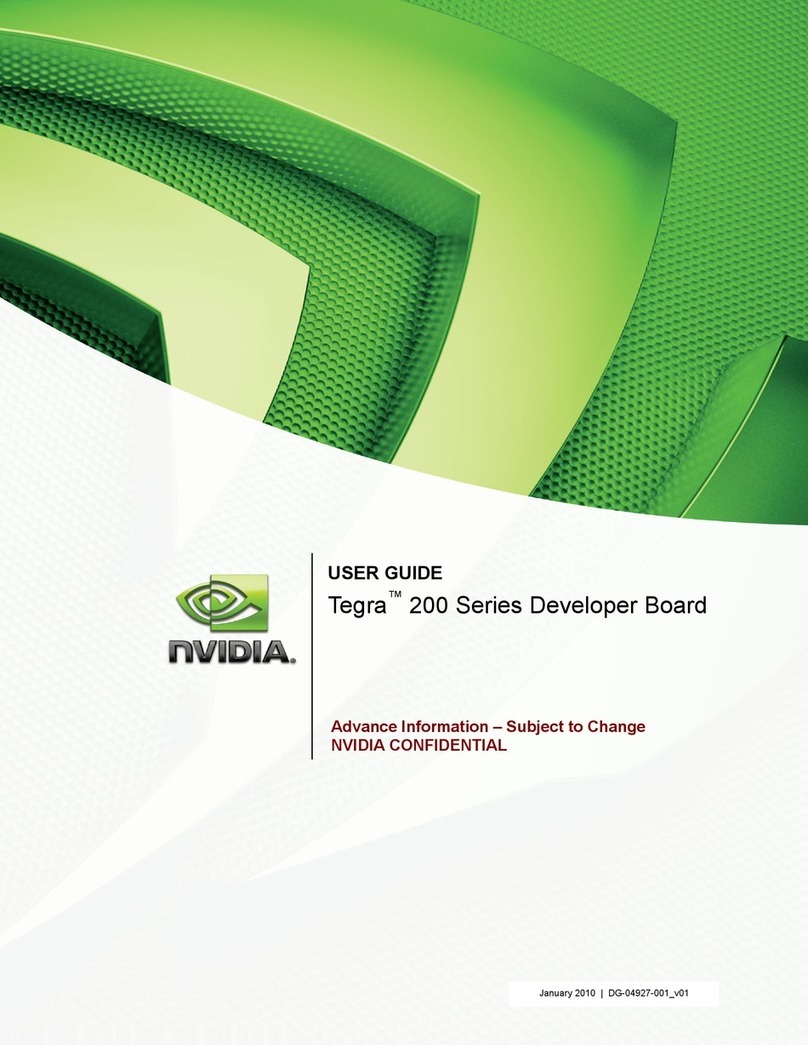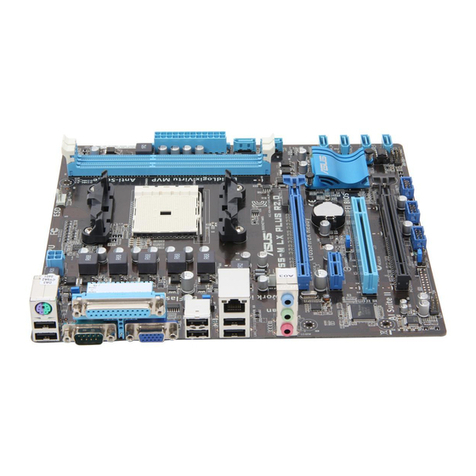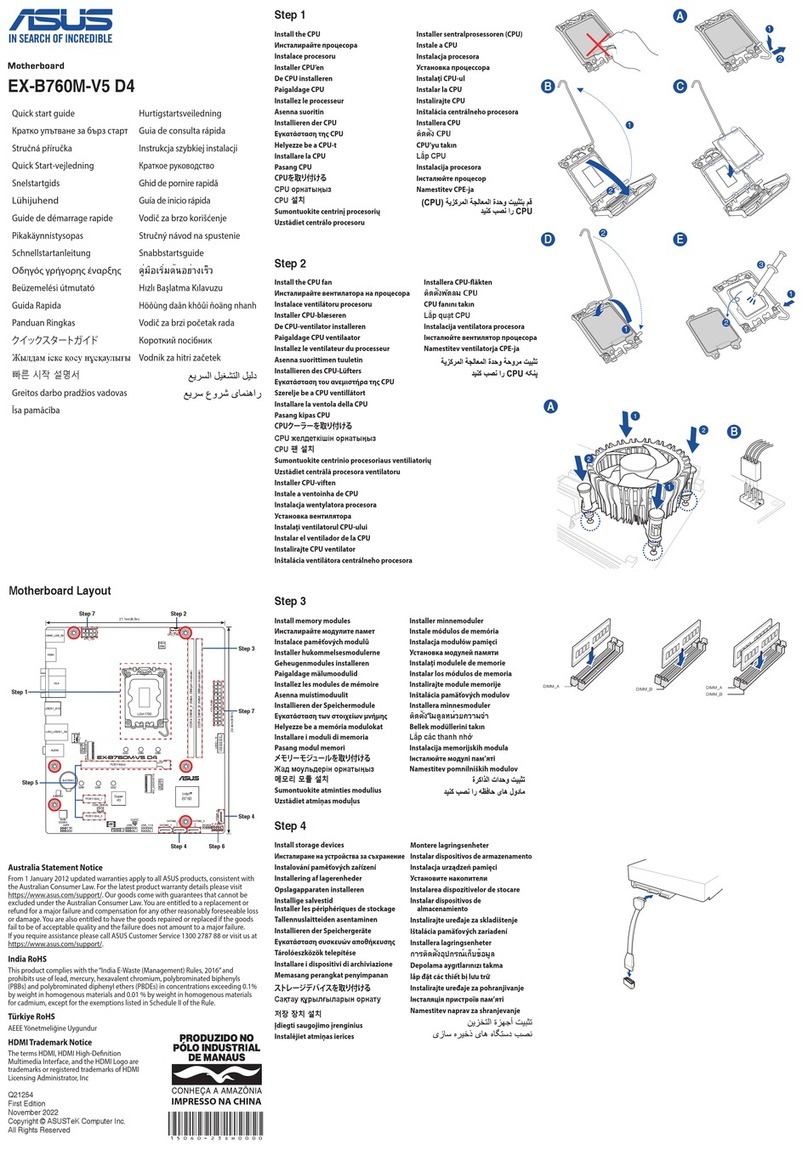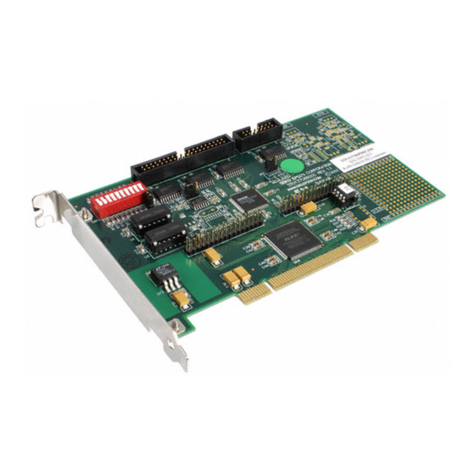
Intel Desktop Board DG965MQ Technical Product Specification
vi
2.5 Interrupts ...................................................................................... 48
2.6 PCI Interrupt Routing Map ................................................................ 49
2.7 Connectors and Headers................................................................... 50
2.7.1 Back Panel Connectors .......................................................... 51
2.7.2 Component-side Connectors and Headers ................................ 52
2.8 Jumper Block .................................................................................. 61
2.9 Mechanical Considerations ................................................................ 62
2.9.1 Form Factor......................................................................... 62
2.9.2 I/O Shield ........................................................................... 63
2.10 Electrical Considerations................................................................... 65
2.10.1 DC Loading.......................................................................... 65
2.10.2 Fan Header Current Capability................................................ 65
2.10.3 Add-in Board Considerations .................................................. 66
2.10.4 Power Supply Considerations ................................................. 66
2.11 Thermal Considerations.................................................................... 67
2.12 Reliability ....................................................................................... 69
2.13 Environmental ................................................................................ 70
3Overview of BIOS Features
3.1 Introduction ................................................................................... 71
3.2 BIOS Flash Memory Organization....................................................... 72
3.3 Resource Configuration .................................................................... 72
3.3.1 PCI Autoconfiguration ........................................................... 72
3.3.2 PCI IDE Support................................................................... 73
3.4 System Management BIOS (SMBIOS)................................................. 73
3.5 Legacy USB Support ........................................................................ 74
3.6 BIOS Updates ................................................................................. 74
3.6.1 Language Support ................................................................ 75
3.6.2 Custom Splash Screen .......................................................... 75
3.7 BIOS Recovery................................................................................ 75
3.8 Boot Options................................................................................... 76
3.8.1 CD-ROM Boot ...................................................................... 76
3.8.2 Network Boot....................................................................... 76
3.8.3 Booting Without Attached Devices........................................... 76
3.8.4 Changing the Default Boot Device During POST ........................ 76
3.9 Adjusting Boot Speed....................................................................... 77
3.9.1 Peripheral Selection and Configuration..................................... 77
3.9.2 BIOS Boot Optimizations ....................................................... 77
3.10 BIOS Security Features .................................................................... 78
4Error Messages and Beep Codes
4.1 Speaker ......................................................................................... 79
4.2 BIOS Beep Codes ............................................................................ 79
4.3 BIOS Error Messages ....................................................................... 79
4.4 Port 80h POST Codes ....................................................................... 80
